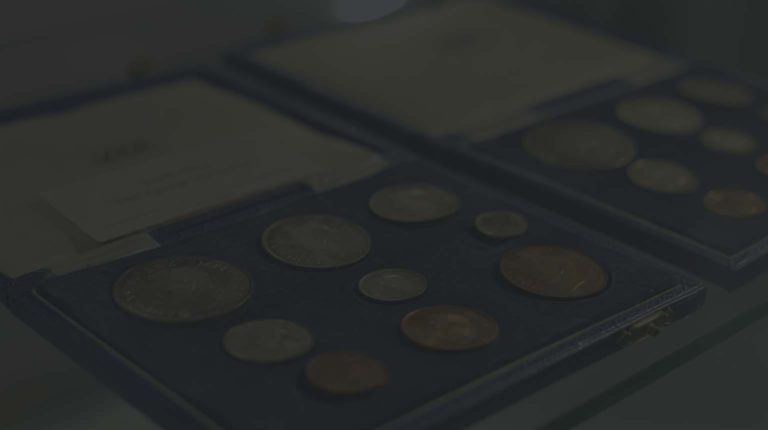
Finally, the brand new £1 coin is in circulation. Whether you think it’s a twelve-sided, bimetallic monstrosity, or a curious breath of fresh air; it has certainly made an impact in the media and in our wallets. With everybody talking about the new coin and its unique security features, the history of counterfeiting, particularly in Britain, came to mind. For as long as there have been coins, there have been counterfeits. They are a nightmare for the state, which throughout history has sought to punish those responsible for polluting their currency, but they continue to be the scourge of modern money.
The earliest coins, struck in modern day Turkey, were minted in precious electrum, a naturally occurring alloy of gold and silver. As soon as they started to circulate, it only took a handful of cunning individuals to realise that if they were to create base-metal copies of the valuable coins, they could coat them in the precious metal, trade them, and end up far better off – as long as the recipient didn’t notice. While early counterfeits are scarce (likely because the coins were strictly weighed) they show the eagerness of the individual to ‘do over’ their fellow citizen and make a quick buck.
As production of coinage exploded across the ancient world, so did counterfeits; most notably imitating the coinages of Attica. Athenian ‘Owl’ Tetradrachms are perhaps the most famous coins of the ancient world and were some of the most faked. To counter this, traders would often chop into the coins with a chisel, to check for silver throughout. As a result, most tetradrachms of Athens suffer from these test cuts (often, heartbreakingly, struck straight through the portrait of Athena), which tend to devalue the coin.
But back to Britain. Whilst rummaging through stock a few weeks ago, eight unusual objects emerged. These small, round pieces of clay were imprinted with Roman coins from the 4th Century AD, and were used in the production of counterfeits. Britain was part of the Roman Empire from AD 43 until around AD 410, and coins flowed to province, making them a prime target for counterfeiting. Iron Age Britons had a habit of faking their own gold ‘staters’, and forging would continue into the Roman period.
During the 1st and 2nd centuries AD, aside from large quantities of imitation copper asses of the emperor Claudius made immediately after the invasion of Britain (which are considered to have been struck for necessity rather than to deceive anyone), counterfeiting seems to have been relatively rare. By the time of the Severan rulers and the 3rd Century, however, large quantities of coin moulds begin to appear, as well as an increase in counterfeit coins – mainly higher value silver denominations.
Coin moulds are discs of fired clay, with coins pressed between them. Once dry, the coins were removed, and when stacked, one on top of the other, formed a row of moulds. These quick, simple and cheap coin moulds removed the need for time-consuming die-engraving, and allowed multiple coins to be cast at once. After the molten base metal had cooled, the coins could be removed, dressed, coated in silver and spent, and the moulds perhaps reused. This method seems to have been effective across the empire, with large quantities of coin moulds found in Switzerland, Rome, and Britain. With a denarius being roughly a day’s wage for a soldier during this period, it certainly made economic sense to counterfeit using such cheap and simple methods.

Thousands of coin moulds have been discovered in the South-West of England, specifically the Somerset Levels, where large numbers of Severan-dated moulds have been discovered in areas of salt production. Brunning suggests the flatness of the levels would have made the evidence of illegal counterfeiting easy to hide, with potential visitors visible for miles. The Shapwick Hoard of 9262 Roman silver denarii, discovered in 1998, contained several cast and plated forgeries which are believed to have come from the same moulds found nearby. Punishments for forgery in the ancient world were strict and this was likely a risky business, but one perhaps overlooked to an extent. Hundreds of coin moulds have been discovered in the ditch around Roman London, the seat of provincial government, where it is hard to imagine forging being discrete.
By the late 3rd Century, so called ‘barbarous’ coins were common in Britain. These were often struck using engraved dies and were very crude. It is thought these were produced, as the Claudian copies were 300 years earlier, as a response to a lack of money in the economy. Thus, these are not considered ‘counterfeits’ as such. With such poor craftsmanship, they are unlikely to have fooled anyone, and may actually have helped the economy of Roman Britain flourish in the fourth Century AD, a time when more Roman villas were thrown up than ever before. Coin moulds, however, did see use in the early decades of the 4th Century, as can be seen by the examples I’ve shown here.
In the present, coin moulds rarely emerge on the market. This is probably because they are not made of metal, thus rarely found by metal detectorists. They remain a fascinating insight into forging in the ancient world, and demonstrate just how easily it could be done.
This is merely scratching the surface of faking in Roman Britain. Along with engraving, transfer dies and metal moulds, clay coin moulds were just another weapon in the ancient counterfeiter’s arsenal. Today, it is thought that one in thirty £1 coins is counterfeit. Hopefully, the new coin will change this frightening statistic, but the counterfeiters will try their hardest. The question is, will the cost of forging the new £1 coin, with all its advanced security features, make counterfeiting unprofitable? We can hope, but only time will tell.



